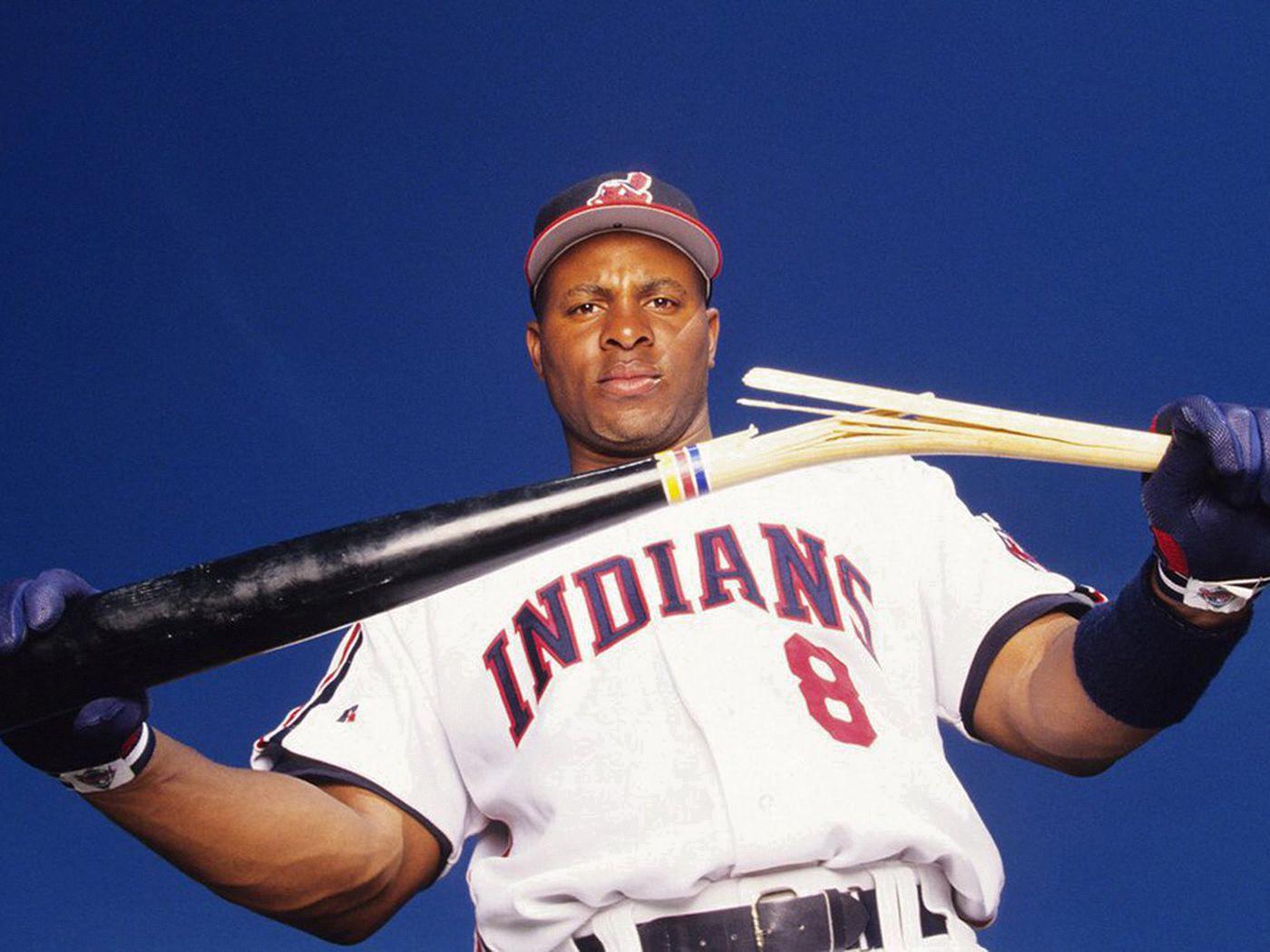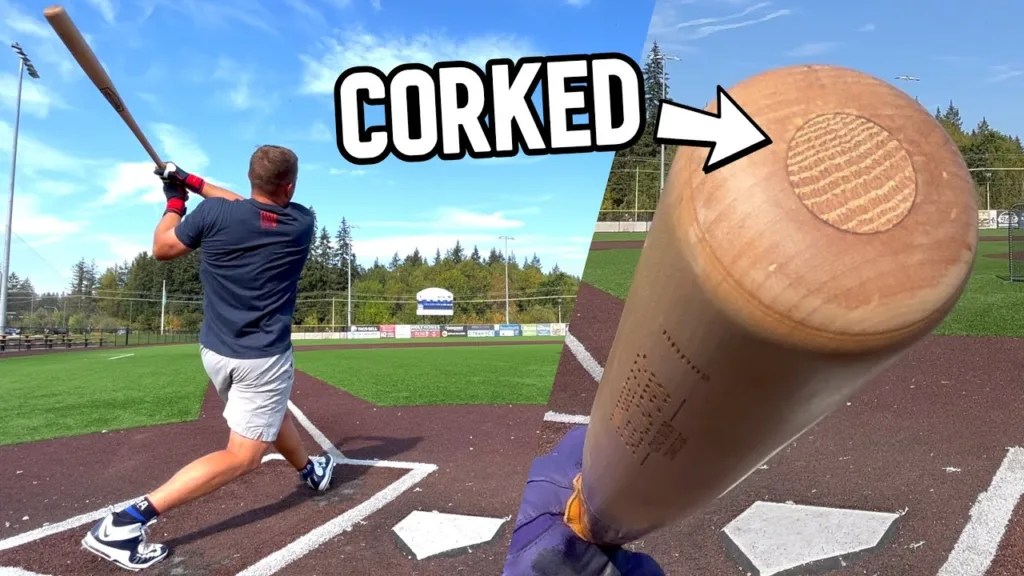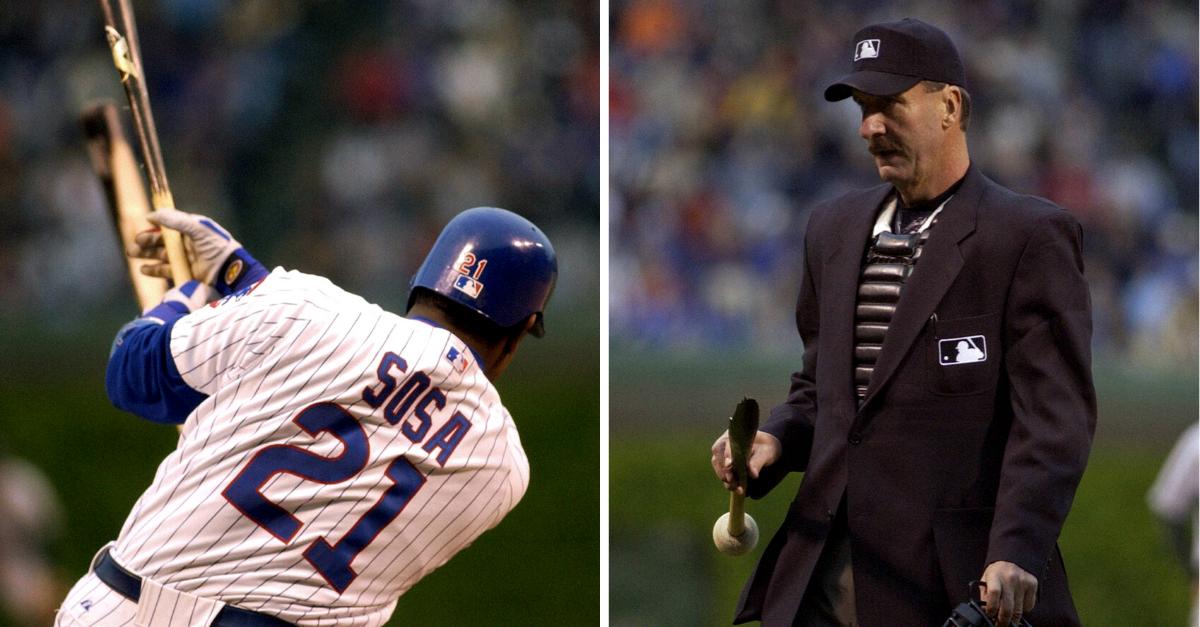Baseball is a sport that is loved by many across the world. It’s a game that requires skill, precision, and strategy. One aspect of baseball that has always been a topic of discussion is the use of a corked bat. In this blog post, we’ll explore what a corked bat is, its history, and whether it really works.
A corked bat is a baseball bat that has been drilled out and filled with lighter materials like cork or rubber. The purpose of using a corked bat is to make it lighter, thus making it easier to swing. The idea is that a lighter bat would allow batters to swing faster and with more control, resulting in a better hit. However, this is a controversial practice, and it’s illegal in Major League Baseball.
The use of a corked bat is illegal in Major League Baseball, and for good reason. While some players may believe that using a corked bat will give them an advantage, the reality is that it can actually hurt their performance. The best way for batters to improve their skills and hit the ball farther is through practice and hard work. So next time you’re watching a game of baseball, keep an eye out for any suspicious activity and remember the importance of fair play.
The Benefits of Using a Corked Bat
A corked bat is advantageous in baseball because it is lighter than a regular bat. The cork or other lighter, less dense substances used to fill the bat reduce its weight, giving the hitter a quicker swing. This can improve the hitter’s timing and increase the velocity of the ball when hit. However, it is important to note that using a corked bat is against the rules in baseball and can result in severe consequences for the player and team if caught.

Source: coveringthecorner.com
The Effect of a Corked Bat on Distance
A corked bat, which is a baseball bat that has been tampered with by hollowing out a portion of its barrel and filling it with cork or anoher lighter material, does not add any distance to a batted ball. In fact, it can have the opposite effect and actually reduce the distance that a ball travels. This is because the cork or lighter material makes the bat lighter, which may increase the speed of the bat, but also reduces its mass and momentum. As a result, the impact of the bat on the ball is lessened, resulting in a weaker hit that does not travel as far as a solid hit with an unaltered bat. Furthermore, the use of corked bats is illegal in baseball and can result in severe penalties for players who are caught using them.
Corked Bat Scandal: Who Got Caught?
Albert Belle, a former Major League Baseball player, was caught with a corked bat. The incident occurred durig a game in July 1994, when Belle’s bat was found to be filled with cork during an inspection by umpires. As a result, Belle was suspended by the American League for 10 games, which was later reduced to seven games upon appeal. However, due to the 1994-95 players strike, the suspension had no impact on Belle’s playing time as the rest of the season was cancelled. The use of corked bats is prohibited in baseball as it is believed to enhance the player’s ability to hit the ball farther than they would with a normal bat.
Does Major League Baseball Check for Corked Bats?
Yes, MLB checks for corked bats. In fact, it is agaist the rules of MLB to use a corked or improperly treated or altered bat. If a manager suspects that an opposing player is using or attempting to use a corked or improperly treated or altered bat, the manager may request the umpire crew chief to inspect and impound the bat. The umpires will then examine the bat to determine if it has been corked or improperly treated or altered. If it is found to be in violation of the rules, the player may be subject to disciplinary action, such as a suspension or fine. Therefore, players are discouraged from using corked bats as they risk severe consequences if caught.
Illegalities of Corking a Bat
Corking a bat is illegal in professional baseball because the rules state that the bat must be made from a single solid piece of wood. The use of cork or any other foreign material inside the bat alters its weight, balance, and performance, giving the player an unfair advantage over the pitcher. Moreover, corking a bat can also endanger other players on the field as the bat may break apart during play, increasing the risk of injury. Therefore, to maintain fairness and safety in the game, the use of corked bats is strictly prohibited in professional baseball.

Why MLB Does Not Use Metal Bats
The MLB does not use metal bats for a few reasons. Firstly, the league was founded using wooden bats, and baseball is a sport that values tradition and history. The use of wooden bats has been a part of the game for over 150 years, and changing to metal bats would alter the game’s fundamental characteristics. Secondly, metal bats can produce greater bat speeds and hit the ball farther than wooden bats. This could lead to safety concerns for pitchers and fielders, as well as an unfair advantage for batters. Additionally, the sound and feel of a wooden bat hitting a baseball is an iconic part of the game that fans and players alike cherish. Finally, the use of wooden bats allows for a level playing field between professional and amateur baseball players. In amateur baseball, metal bats are commonly used due to ther durability and affordability, but the switch to wooden bats at the professional level ensures that players are evaluated based on their skill rather than the technology of their equipment. Overall, the MLB’s decision to continue using wooden bats helps to preserve the integrity and history of the game while also promoting fairness and safety for all players.
The Effect of Bat Weight on Batting Distance
Yes, using a heavier bat can result in hitting the ball farther. This is because a heavier bat can generate more momentum and energy when swung with the same force as a lighter bat. When the bat makes contact with the ball, the energy is transferred to the ball, resulting in a higher batted ball velocity. This higher velocity means that the ball will travel farther than if it were hit with a lighter bat. However, it’s important to note that the player must be able to maintain the same bat swing speed with a heavier bat to achieve this increase in distance. Otherwise, the extra weight may slow down thir swing, resulting in a decrease in batted ball velocity and distance.
Is a 34 Inch Bat an Appropriate Size for Swinging?
If you are a baseball player between the ages of 16 and 18, swinging a 34 inch bat may be optimal for you. However, it is important to note that bat length should be based on individual preference and comfort level. It is recommended to try out different lengths and weights of bats to find the one that feels most comfortable and allows for the best swing. Additionally, it is important to cnsider the league regulations, as some leagues may have restrictions on bat length. Ultimately, the decision to swing a 34 inch bat should be based on individual factors such as age, skill level, and personal preference.
Has an MLB Player Ever Been Impaled by a Broken Bat?
Unfortunately, there have been instances in Major League Baseball where players have been impaled by a broken bat. One such incident occurred in 2015 when then-Oakland Athletics third baseman, Brett Lawrie, broke his bat during a game against the Boston Red Sox. The barrel of the bat flew into the stands, striking a woman in the head, causing her to bleed profusely. Another incident occurred in 2016 when Kansas City Royals catcher, Salvador Perez, broke his bat during a game against the Chicago White Sox. The bat shattered and a piece of it flew towards the White Sox dugout, striking pitcher Chris Sale in the arm. While tese incidents are rare, they are a reminder of the dangers that can come with playing the sport at a high level. In response, Major League Baseball has implemented new regulations on the quality of wood used for bats in order to reduce the risk of breakage.

Source: nydailynews.com
The Use of Bat Sprays by Players
Players typically spray pine tar on their bats to improve their grip on the handle. Pine tar is a sticky, brownish-black substance that is made from the resin of pine trees. When applied to the handle of a bat, it creates a tacky surface that helps the player maintain a firm grip on the bat, even in wet or humid conditions. Some players may also use other types of grip enhancers, such as grip spray or rosin, which can provide a similar effect. However, pine tar is the most commonly used substance for this purpose in baseball. It is important to note that tere are rules and regulations regarding the amount of pine tar that can be applied to a bat, as using too much can give the player an unfair advantage.
The Last MLB Player Caught With a Corked Bat
The last MLB player to be caught with a corked bat was Sammy Sosa of the Chicago Cubs in 2003. Sosa was caught using a corked bat during a game against the Tampa Bay Devil Rays. He claimed that he had picked up the corked bat by mistake and that he had only used it for batting practice. Following the incident, all 76 of Sosa’s confiscated bats were X-rayed and found to be cork-free, while the five bats he gave to the Hall of Fame were also found to be clean.
The Duration of Sammy Sosa’s Use of a Corked Bat
There is no evidence to suggest that Sammy Sosa had been using a corked bat prior to the incident in 2003. It is important to note that using a corked bat is against Major League Baseball rules and can result in severe consequences, including suspensions and tarnished reputations. While Sosa’s use of a corked bat may have been an isolated incident, it ultimately had a negative impact on his legacy and raised questions about the legitimacy of his past accomplishments.
Consequences of Using an Illegal Bat
If a player uses an illegal bat in a baseball game, there are consequences that follow. As per the rules of the game, the player is immediatly declared out if the infraction is detected by the umpire or defense before the next pitch. The ball is considered dead, meaning the play is stopped, and all runners will return to the base they occupied when the pitch was thrown. It’s important to note that the rules vary depending on the league or level of play, so it’s always best to check with the specific rules before using a bat. Using an illegal bat can result in penalties, fines, or even suspensions, so it’s crucial to follow the rules to avoid any negative consequences on the field.

Source: fanbuzz.com
Identifying Illegal Bats
A bat can be considered illegal if it does not meet the specific guidelines set by the governing body of the league or tournament beng played. For example, in baseball, bats must not be more than 36 inches in length, not more than 2⅝ inches in diameter, and if made of wood, not less than fifteen-sixteenths (15/16) inches in diameter (7/8 inch for bats less than 30″) at its smallest part. Additionally, wood bats taped or fitted with a sleeve may not exceed eighteen (18) inches from the small end.
To check if a bat is legal or not, one can verify the specifications of the bat by checking the manufacturer’s label or by measuring the bat’s length and diameter with a measuring tape. Some leagues or tournaments may also require a specific certification mark on the bat to ensure its legality.
It is important to note that using an illegal bat can result in penalties or disqualification from the game, so it is crucial to confirm the bat’s legality before using it in a game or tournament.
Conclusion
In conclusion, a corked bat is a baseball bat that has been modified by filling it with lighter materials like cork to make it lighter. While this modification may improve a hitter’s timing, it has no real impact on the speed of batted balls and their distance. The use of a corked bat is considered cheating in baseball and is strictly prohibited. If a manager suspects an opposing player of using a corked bat, they can request the umpire crew chief to inspect and impound the bat. It is essential to maintain the integrity of the game and ensure fair play, which is why the use of a corked bat is taken very seriously in baseball.
